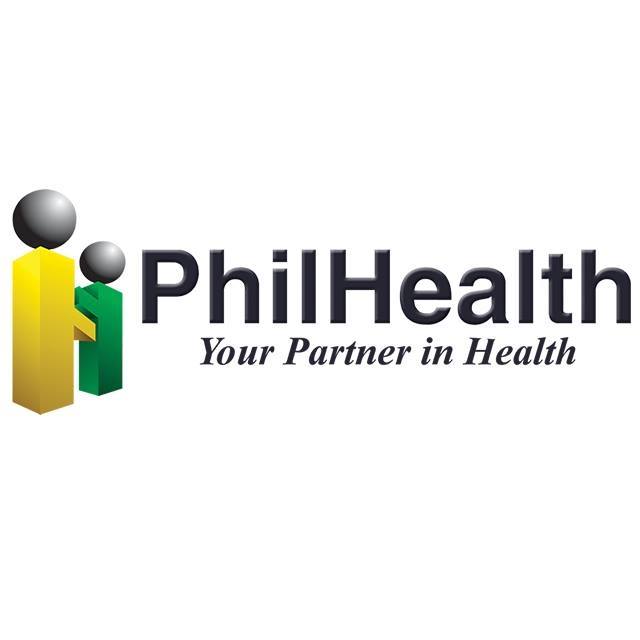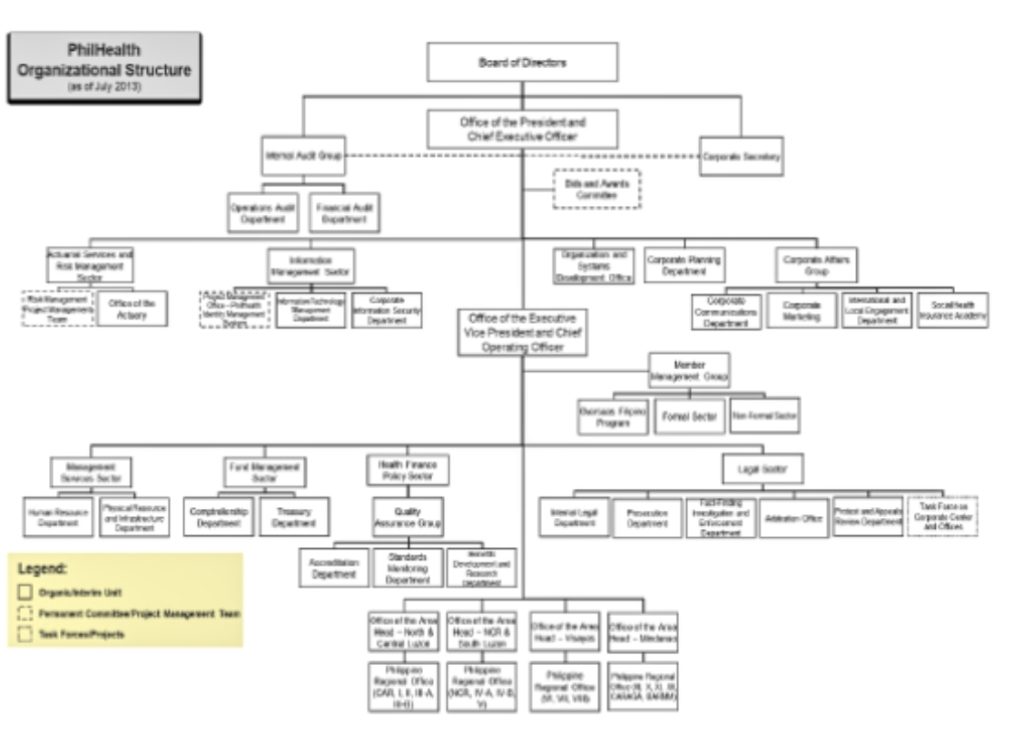PhilHealth, or the Philippine Health Insurance Corporation, is a government-owned organization established to provide universal health insurance coverage to all Filipinos. It is an important public agency that makes healthcare more accessible and affordable, especially for those who do not have immediate access to quality medical services. Through various benefit packages, PhilHealth helps alleviate the financial burden of healthcare costs, ensuring that every Filipino can receive essential medical care when needed.
PhilHealth addresses the significant social problem of inadequate healthcare access and financial protection against medical expenses. Without it, many Filipinos, particularly those in lower-income groups, would struggle to afford necessary treatments, leading to worsened health outcomes and increased poverty. While PhilHealth primarily offers coverage for medical services, it also provides indirect cash assistance by significantly reducing out-of-pocket expenses for its members. In this article, we looked into the history, vision, mission, and benefits of PhilHealth, highlighting how it assists Filipinos through various cash assistance programs.
What is PhilHealth?
PhilHealth, short for the Philippine Health Insurance Corporation, is a government-owned and controlled corporation (GOCC) tasked with providing universal health insurance coverage to all Filipinos. Established under the National Health Insurance Act of 1995, PhilHealth aims to ensure that healthcare is accessible, affordable, and available to every citizen, regardless of social status. This agency pools funds from member contributions and government subsidies to offer a wide range of medical benefits, significantly reducing the financial burden of healthcare on individuals and families.
PhilHealth’s mission is to provide sufficient and quality health benefits to all Filipinos, ensuring that every member is protected against the high costs of medical services. By covering a variety of health services, including inpatient and outpatient care, PhilHealth serves as a safety net, especially for those in vulnerable communities. It promotes public health protection and prevents hardships in times of serious illnesses or medical emergencies. It also makes healthcare accessible, available, and affordable for all citizens, regardless of their socio-economic status.

History of PhilHealth
PhilHealth traces its roots back to the 1960s when the Philippine Medical Association introduced the MARIA Project, which aimed to provide medical assistance to rural indigents. This initiative laid the groundwork for the Medicare program, established by the Philippine Medical Care Act of 1969 under President Ferdinand Marcos. The program was overseen by the Philippine Medical Care Commission for nearly 25 years. In 1995, the National Health Insurance Act was signed by President Fidel V. Ramos, leading to the creation of the Philippine Health Insurance Corporation, or PhilHealth as we know it. It assumed administration of the Medicare program for both government and private sector employees in the late 1990s and expanded its coverage to Overseas Filipino Workers (OFWs) in 2005. Today, PhilHealth operates under a sustainable fund pooling, management, and disbursement system, ensuring that healthcare remains affordable and accessible to all Filipinos. The agency also assumed the task of providing universal health insurance coverage to all Filipinos within 15 years.
PhilHealth Logo

The PhilHealth logo is a visual representation of the organization’s mission and values in providing health insurance to Filipinos. The logo prominently features two human figures, stylized as abstract shapes. The larger figure is yellow, and the smaller one is green, symbolizing the collaboration between PhilHealth and the Filipino people. These colors are often associated with vitality, health, and growth, reflecting PhilHealth’s commitment to enhancing the well-being of the nation. The larger yellow figure represents PhilHealth as a guiding and supportive force, while the smaller green figure represents the citizens who benefit from the health services provided by the agency.
The logo also features circular heads of both figures, depicted in gray, suggesting unity and protection, reinforcing the idea that PhilHealth is a partner in safeguarding the health of every Filipino. The logo is also typically accompanied by the text “PhilHealth” and the tagline “Your Partner in Health,” emphasizing the organization’s role in ensuring accessible and affordable healthcare for all. The overall design conveys trust, partnership, and the agency’s dedication to universal healthcare coverage.
PhilHealth Mission
“Benepisyong Pangkalusugang Sapat at De-kalidad para sa Lahat”
(Affordable and Quality Healthcare Benefits for All)
Vision
“Bawat Filipino, Miyembro, Bawat Miyembro, Protektado, Kalusugan ng Lahat, Segurado”
(Every Filipino, a Member, Every Member, Protected, Everyone’s Health, Secured.)
Core Values
PhilHealth’s core values emphasize its commitment to providing quality healthcare services, ensuring that every Filipino has access to affordable and comprehensive health coverage. These values guide the organization’s operations, fostering trust, integrity, and accountability in its mission to enhance the nation’s well-being.
- Integridad (Integrity): Commitment to honesty and moral principles in all actions.
- Inobasyon (Innovation): The pursuit of new ideas and improvements in healthcare services.
- Agarang Serbisyo (Prompt Service): Delivering timely and efficient services to all members.
- Taos-Pusong Paglilingkod (Heartfelt Service): Providing service with genuine care and dedication.
- Pagmamalasakit (Compassion): Showing empathy and concern for the needs of others.
- Angkop na Benepisyo (Appropriate Benefits): Ensuring the right and suitable benefits are provided to members.
- Panlipunang Pagkakabuklod (Social Solidarity): Promoting unity and collective responsibility in healthcare.
Organizational Structure

Just like the other GOCCs operating in the Philippines, PhilHealth is also headed by a Board of Directors. It is directly managed by the Chief Executive Officer, supported by the Vice President and Chief Operating Officer. The agency itself houses several divisions and offices, each having their own special field to deal with.
Mandate
PhilHealth was established to ensure that all Filipino citizens have access to affordable and comprehensive health care services. The program aims to facilitate coverage for the healthy to support the sick and enable those who can afford care to help subsidize those who cannot. Initially encompassing Programs I and II (Medicare), it will expand to a universal health insurance system for the entire population.
- Provides health insurance coverage to all citizens.
- Facilitates financial support for health care between those who can and cannot afford it.
- Includes a sustainable system for funds collection, management, and disbursement for health insurance benefits.
- Prohibits direct provision of health care services, purchasing and dispensing drugs, employing health professionals, and owning health care facilities.
According to Article III, Section 5 of RA 7875 as amended, it also:
- Prohibited from providing health care directly,
- From buying and dispensing drugs and pharmaceuticals,
- From employing physicians and other professionals for the purpose of directly rendering care, and
- From owning or investing in health care facilities.
Powers and Functions
PhilHealth, a tax-exempt Government Corporation under the Department of Health (DoH), has the following powers and functions:
- Administer the National Health Insurance Program (NHIP).
- Formulate and implement policies for the Program’s administration.
- Oversee health benefits, set standards, and ensure quality care and effective service utilization.
- Develop guidelines for contributions, benefits, cost containment, and provider arrangements.
- Establish branch offices as required.
- Manage grants, donations, and other assistance.
- Sue and be sued in court.
- Acquire necessary property for the Act’s purposes.
- Handle the collection, investment, and management of the National Health Insurance Fund.
- Negotiate contracts with health care institutions and professionals for services.
- Authorize Local Health Insurance Offices to contract with accredited health providers.
- Set requirements and guidelines for accrediting health care providers.
- Inspect health care providers’ facilities and records as needed.
- Organize its office, appoint personnel, and set compensation.
- Submit an Annual Report to the President and Congress, and publish a summary in newspapers.
- Maintain records of operations and investments.
- Maintain a secure electronic database of members.
- Invest in enhancing information technology systems.
- Conduct public information campaigns about NHIP benefits and procedures.
- Perform post-audits on service quality from health care providers.
- Set up an office or focal person in Philippine Consular Offices to handle OFW claims.
- Impose and adjust interest/surcharges for late contribution remittances, and compromise as necessary.
- Support technology use in health care, including telemedicine and electronic health records.
- Monitor regulatory compliance and enforce necessary actions.
- Require proof of PhilHealth membership for business dealings with private entities.
- Accredit independent pharmacies and retail drug outlets.
- Perform other acts to achieve the Corporation’s objectives and enforce the Act’s provisions.
Benefits
PhilHealth provides a wide range of medical benefits to support Filipinos in need of healthcare services. These benefits include:
1. Inpatient Benefits
Coverage for diagnostic or therapeutic procedures, hospital charges, and professional fees during hospital confinement.
2. Outpatient Benefits
Assistance for procedures and treatments that do not require hospitalization, such as day surgeries, radiotherapy, and hemodialysis.
3. Z Benefits
Support for severe conditions requiring costly treatments, including various types of cancer and kidney transplants.
4. SDG-Related Benefits
Packages for conditions like malaria, HIV-AIDS, and animal bites, in line with the United Nations Sustainable Development Goals.
5. Maternity Benefits
Coverage for prenatal check-ups, normal spontaneous deliveries, cesarean sections, and newborn care.
6. Mental Health Services
Ongoing efforts to include mental health services in the primary care packages.
Coverage and Beneficiaries
The NHIP aims to provide comprehensive health care coverage to all eligible Filipinos. It ensures that beneficiaries receive the necessary medical services while promoting inclusivity and accessibility. Coverage extends to various sectors of the population, ensuring broad protection and support.
- Individually Paying Members: Filipinos who pay their own premiums for health coverage.
- Employed Members: Workers whose premiums are shared between employers and employees.
- Government-Sponsored Members: Individuals covered by government subsidies, such as indigents and senior citizens.
- Overseas Filipino Workers (OFWs): Filipinos working abroad who maintain their health insurance.
- Dependent Family Members: Qualified family members of insured individuals, including spouses and children.
- Retirees: Senior citizens who receive benefits under the National Health Insurance Program.
Membership
PhilHealth, as a membership institution, offers several membership categories to ensure comprehensive coverage for all Filipinos:
- Formal Economy Members: Employed individuals in government or private sectors, including seafarers.
- Informal Economy Members: Self-employed individuals, informal workers, and voluntary contributors.
- Overseas Filipino Workers (OFWs): Sea-based and land-based OFWs with specific contribution schemes.
- Senior Citizens: Filipinos aged 60 and above not belonging to any other category.
- Lifetime Members: Those aged 60 and above with at least 120 monthly contributions.
- Sponsored Members: Individuals whose contributions are covered by a sponsor, such as local government units or private agencies.
- Indigent Members: Individuals without a stable source of income, as identified by the Department of Social Welfare and Development (DSWD).
- Qualified Dependents: Dependents covered by the principal member’s contributions, including spouses, children, and parents.
Member Contribution Rates
PhilHealth’s contribution rates vary based on the member’s salary. As of 2023, the premium rate is set at 4.5% of the monthly basic salary, with a planned increase to 5% in 2024-2025. Contributions are shared between employees and employers for formal economy members, while informal economy members and voluntary contributors pay the full premium amount.
Programs and Services
PhilHealth offers a range of programs and services designed to meet the diverse health care needs of its members. These programs aim to ensure that medical care is accessible and affordable, covering various aspects of health services. By providing comprehensive benefits, PhilHealth supports both preventive and curative health care.
1. Program I (Medicare)
Provides basic health insurance coverage to senior citizens, including hospitalization, outpatient services, and medical procedures.
2. Program II (Indigent Program)
Offers subsidized health care for low-income families, covering essential health services and treatments.
3. Konsulta Package
Covers outpatient consultation services, including:
- routine check-ups
- diagnostic tests
- preventive care
- day surgeries
- radiotherapy
- outpatient blood transfusion, and
- hemodialysis.
4. Primary Care Benefits
Includes services for preventive care, such as vaccinations and health screenings, to promote early detection and management of diseases.
5. Case Rate Package
Offers fixed financial coverage for specific medical cases and procedures, ensuring predictable costs for both patients and health providers.
6. Z Benefit Package
Provides comprehensive coverage for high-cost medical conditions, including major surgeries and treatments, to reduce the financial burden on patients with
- Cancer (prostate, breast, cervical),
- Kidney transplant, and
- Selected orthopedic implants.
7. SDG Package
Following the United Nations Sustainable Development Goals (SDG), it covers members diagnosed with or undergoing procedures for the following:
- outpatient malaria
- outpatient HIV-AIDS
- animal bite, and
- voluntary surgical contraception procedures
8. Maternity Care Package
Covers prenatal, delivery, and postnatal care for expectant mothers, including hospitalization and professional fees.
- Antenatal care package
- Prenatal check-ups
- laboratory tests
- ultrasounds
- Prenatal check-ups
- Normal spontaneous delivery package
- Normal, low-risk vaginal deliveries
- postnatal check-ups from three to seven days post-delivery
- Other methods of delivery
- Cesarean,
- breech extraction,
- vaginal delivery after cesarean section, and
- complicated vaginal delivery (with or without forceps or episiotomy)
- Newborn care package: This covers:
- Newborn screening
- Hearing tests and
- Provisions of essential newborn care, including
- Early skin-to-skin contact,
- Drying of the baby,
- Weighing of the baby, etc.
9. Dialysis Package
Provides coverage for regular dialysis treatments for patients with chronic kidney disease, including necessary medications and procedures.
How to Claim PhilHealth Benefits
To claim PhilHealth benefits, members must meet certain requirements, including regular payment of contributions. Required documents typically include:
- a PhilHealth ID,
- a signed PhilHealth Claim Form,
- an updated Member Data Record (MDR), and
- proof of contribution payments
They would then need to present these documents at the PhilHealth window at the hospital, before processing the assessed hospital billing statement.
Video: PhilHealth Registration, Mag 4M na!
PhilHealth has reached a milestone of 4 million registered members, according to this video from teamphilhealth, reflecting its expanding reach and growing impact. This achievement underscores the program’s commitment to providing health insurance coverage to a significant portion of the Filipino population. The increasing number of registrants highlights the importance of accessible and affordable health care for all.
Summary
PhilHealth stands as a necessary pillar in the Philippine healthcare system, offering extensive health services and financial support to its members. By understanding and maximizing the benefits provided by PhilHealth, Filipinos can ensure better health and financial security for themselves and their families. If you have yet to use your PhilHealth benefits for whatever reason, make sure to at least know what you can get out of it.
Contact Information
For more information, members can contact PhilHealth through their hotlines or visit their official website.
PhilHealth
Main Office Address: Citystate Centre, 709 Shaw Blvd.,
1603 Pasig City, Philippines
New Hotline: (02) 866-225-88 (Available 24/7 including weekends and holidays via homepage www.philhealth.gov.ph (bottom-right portion)
Email Address: actioncenter@philhealth.gov.ph
Mobile Hotlines: Smart: 0998-857-2957; 0968-865-4670 Globe: 0917-127-5987; 0917-110-9812 (Call and text 24/7)
To request for callback via preferred mobile hotline, text:
“PHICallback [space] Mobile Number to be called [space] details of your concern”
Callback schedule is from 8 am 8 pm, 12 hours by 7 days, including weekends and holidays.
Note: Ask the agent for details to make sure the callback is from PhilHealth.
Official Facebook: PhilHealthofficial
Official X: teamphilhealth
